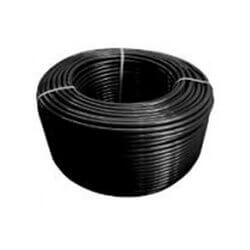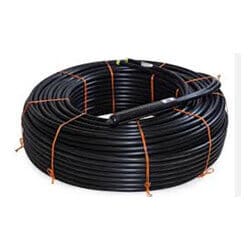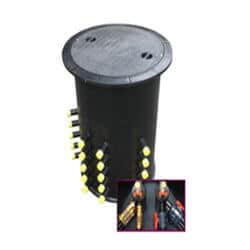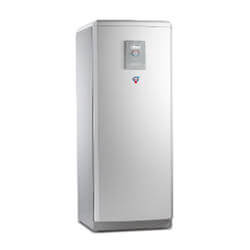
How Do They Work?
They operate by transferring heat that resides in the ground all year round. This latent heat, when passed over a cooler fluid circulating in the ground loops of the heat pump system, transfers the heat into fluid held within the loop.
Fluid is pumped firstly through a compressor. This increases the temperature. It is then pushed through heat exchanger. This transfers the heat into either a hot water cylinder or the heating system of the property.
Product Videos
Ground Source Heat Pump Benefits
- Ground Source Heat Pump installations can be over 400% more efficient and are typically cheaper to run than most other forms of heating.
- They are eligible for RHI so the cost of installation is minimised.
- They are are safe. There is no combustion involved and no emission of potentially dangerous gases.
- Less maintenance is required than combustion based heating systems and typically enjoy a longer life, typically in excess of 25 years.
- They require no fuel storage and no fuel deliveries. They save space and carbon emissions.
- Unlike burning oil, gas, LPG or biomass, there are no carbon emissions on site. There are no carbon emissions at all if a renewable source of electricity is used to power them.
- They can provide cooling in the summer, as well as heating in winter.
- A well designed renewable installation is likely to increase the sale value of your property.
Key Selection Questions
When assessing the suitability of installing a GSHP you will need to answer the following questions;
Is there sufficient outside space at my property to install horizontal ground loops?
Typically the minimum space requirement to install ground loop pipes is a ratio of 2.5 times the heated floor area of the property – this is the sum of all floors – but will be dependent on the geology of the site. Where there is insufficient space then vertical boreholes can be drilled but are typically a more expensive installation than ground loops.
Where will the GSHP, hot water cylinder and buffer tank be located inside the property?
The space requirements of the equipment should be checked to ensure there is sufficient room.
Which type of emitter system will be used – radiators or underfloor heating?
If the emitters are to be new then they can be sized to suit a heat pump and aim for the maximum efficiency and lowest running costs, if they are existing then the correct heat pump needs to be selected to deliver the correct heating performance.
What form of control of the heating and hot water would be required?
It is possible to set up heating zones to different parts of a property, with both time and temperature control, that can be managed either centrally or remotely by smartphone

Applications
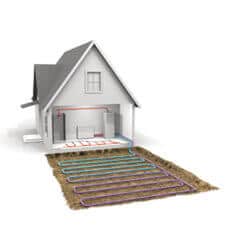
The ground loops are typically buried approx 1m below the surface where there is sufficient space this approach is often the lowest cost solution.
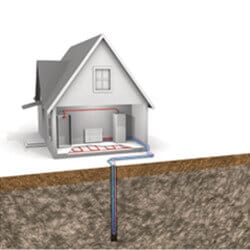
Boreholes are typically drilled between 100 and 200m deep to provide sufficient surface area contact for heat transference this approach is used where space is limited .
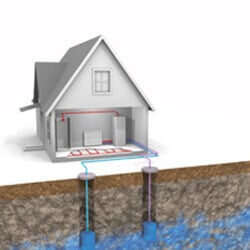
Groundwater is pumped up to the heat pump where the heat is extracted and discharged to another well. This solution provides an even temperature all year round and offers passive cooling in summer.

This approach requires access to an open lake but benefits from requiring no drilling or excavating to lay the loop collector, only weighting the pipe down so that it will rest on the lake bed.
Product Options
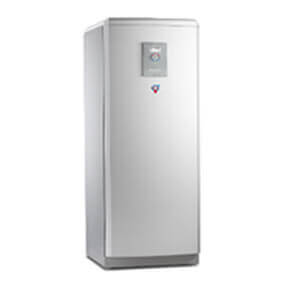
c/w 180L Hot Water Cylinder Applications Domestic from 6KW to 17KW
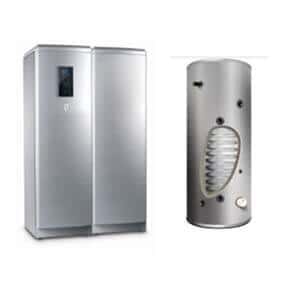
Plus separate hot water cylinder as required
Applications
Domestic from 6KW to 13KW
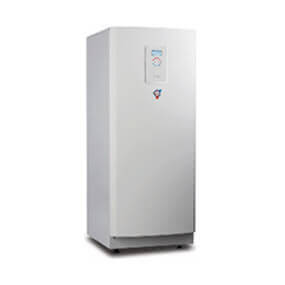
Plus separate hot water cylinder as required Applications Large Domestic / Samll Commercial from 33KW to 42KW
Key Features
- Cooling function available
- ‘ Superdeheater’ option that produces higher hot water temperatures
- Single and Three phase options
- Online monitoring available
- A lifespan of 25 years
- 10-year guarantee
- MCS approved ground source heat pump installers
- Solar Keymark certified
Key System Components
